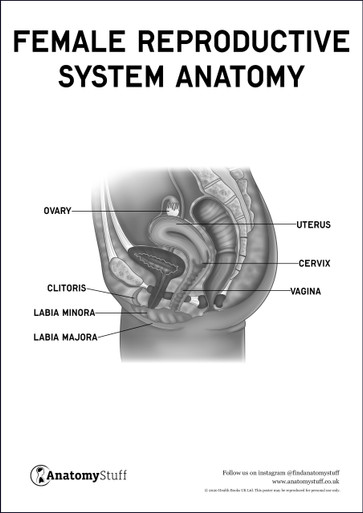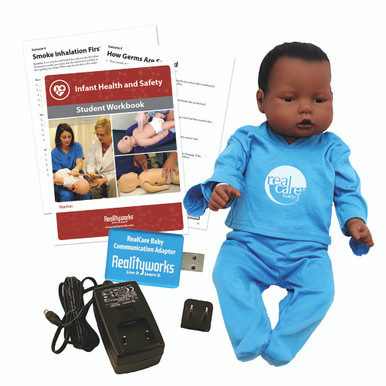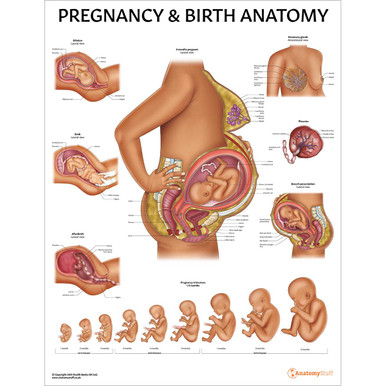Anatomical & Physiological Changes during Pregnancy
Normally, the uterus lies between the rectum (posteriorly) and the bladder (anteriorly). It is held in place by tensed ligaments and muscles. The uterus has three layers, the endometrium, myometrium and perimetrium; endometrium (the innermost layer) is where the placental attachment occurs 8 to 9 days after gestation, and the same layer is shed during menstruation.
The gestation period starts as soon as a sperm fertilises an ovum and takes 37 – 40 weeks to end. The female body might not show any difference in the initial days except for the missing period. It’s only when a pregnancy test is taken and it returns a positive result. The increased HCG levels confirm pregnancy.
Let’s now highlight the anatomical changes during the prenatal period of gestation before birth.
What changes happen in the abdomen?
The most obvious change during pregnancy is the appearance of a baby bump. The abdominal muscles strengthen, stretch and expand to make room for the developing foetus. Along with the distended abdomen, protrusion of the umbilicus is also visible during the second trimester.
Free Download PDFs
View AllWhat changes happen in the pelvic and perineal regions?
Typically, the pelvis size and shape varies from person to person. During pregnancy, the pelvis broadens, and the muscles and ligaments relax to accommodate the growing baby.
As the baby develops within the uterus, the uterus enlarges. The increased uterus size puts pressure on the bladder, increasing the urge to urinate. During the last trimester the pelvis, uterus, cervix, and vagina start preparing the body for labour.
Moreover, there is a strengthening of uterine wall muscles. They also tighten up to prepare the body for labour. This uterine muscle tightening is felt like contractions, commonly termed Braxton-hickscontractions. They become stronger as the due date approaches and might be a bit uncomfortable, if not painful.
The Cervix, the lowermost part of the uterus, is normally firm and smooth and starts to soften by the end of the third trimester. When the delivery time is near, the cervix dilates to make space for the delivering baby. The vaginal mucosa becomes thick so that it doesn’t tear during the baby’s passage from the birth canal. There is also an increased blood supply to the genital organs, which may turn them blue.
What changes happen in the breasts during pregnancy?
Normally, the breasts sit over the pectoralis major muscle lying anteriorly in the thoracic region. Female breasts normally start developing at puberty. However, the pubertal breasts are incomplete.
In the first trimester, elevated oestrogen levels lead to ductal proliferation and expansion, and there is a decrease in adipose tissues. The mammary glands within the breast start developing during the second trimester (around the 20th week) in response to increased levels of prolactin secreted from the pituitary gland.
In short, during pregnancy, the breast increases in size, there is soreness and tenderness, the areolar region darkens, and the nipple becomes more prominent for lactation.
What systemic changes happen?
All internal systems try to adapt to the changing environment. The cardiac output increases 40% more than the normal value. An overall increase in blood plasma leads to excessive filtration by the kidneys, which ultimately results in the need to urinate more often.
There can be backache, light-headedness, nausea, vomiting (morning sickness), headache, bloating, and constipation, all due to physiological and hormonal disturbances.
What lower limb changes occur?
Around 50% of pregnant women complain of oedema or swelling of the lower extremities. This occurs when the enlarging uterus presses upon the inferior vena cava, diminishing the blood’s return to the heart. There may also be tiredness and joint pain. Due to the high viscosity of blood and decreased velocity, some women may also experience numbness in the lower limb.
Will there be much weight gain?
The growing foetus with surrounding amniotic fluid leads to weight gain, especially in the last trimester. Hence, the body weight is maximum before the baby starts coming out. The weight gain may also result in stretch marks that are mostly permanent.
Takeaway
In conclusion, a female body during pregnancy goes through drastic anatomical changes. To avoid any pathology, it’s essential to keep a regular check on anatomical changes during pregnancy (of both baby and mother). In most cases the body acquires the usual pre-pregnant anatomy after the delivery, every person and therefore everyone’s body is unique, and will get back to its pre-pregnancy anatomy in its own way, and at its own pace.
Free Download PDFs
View AllRelated Products
View All
















